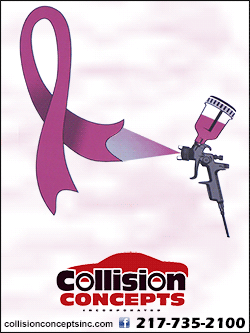|
 Types of breast biopsies Types of breast biopsies
There are different kinds of breast biopsies. Some are done using a
hollow needle, and some use an incision (cut in the skin). Each has
pros and cons. The type you have depends on a number of things,
like:
-
How suspicious the breast change looks
-
How big it is
-
Where it is in the breast
-
If
there is more than one
-
Any other medical problems you might have
-
Your personal preferences
For most suspicious areas in the breast, a needle
biopsy (rather than a surgical biopsy) can be done. Ask the doctor
which type of biopsy you will have and what you can expect during
and after the procedure. Fine Needle
Aspiration (FNA) Biopsy of the Breast
If other tests show you might have breast cancer, your doctor may
refer you for a fine needle aspiration (FNA) biopsy. During this
procedure, a small amount of breast tissue or fluid is taken from
the suspicious area and is checked for cancer cells.

What is an FNA breast biopsy?

In an FNA biopsy, the doctor uses a very thin, hollow needle
attached to a syringe to withdraw (aspirate) a small amount of
tissue or fluid from a suspicious area. The biopsy sample is then
checked to see if there are cancer cells in it.
If the area to be biopsied can be felt, the needle can be guided
into it while the doctor is feeling it.
If the lump can't be felt easily, the doctor might
watch the needle on an ultrasound screen as it moves toward and into
the area. This is called an ultrasound-guided biopsy.
What should you expect if you have an FNA?
During an FNA
An FNA is an outpatient procedure most often done in the doctorís
office. Your doctor might use a numbing medicine (called a local
anesthetic), but it's not needed in all cases. This is because the
needle used for the biopsy is so thin that getting an anesthetic
might hurt more than the biopsy itself.
Youíll lie on your back for the FNA, and you will have to be still
while itís being done.
If ultrasound is used, you may feel some pressure from the
ultrasound wand and as the needle is put in. Once the needle is in
the right place, the doctor will use the syringe to pull out a small
amount of tissue and/or fluid. This might be repeated a few times.
Once the biopsy is done, the area is covered with a sterile dressing
or bandage.
Getting each biopsy sample usually takes about 15 seconds. The
entire procedure from start to finish generally takes around 20 to
30 minutes if ultrasound is used.
After an FNA
Your doctor or nurse will tell you how to care for the biopsy site
and what you can and canít do while it heals. Biopsies can sometimes
cause bleeding, bruising, or swelling. This can make it seem like
the breast lump is larger after the biopsy. Most often, this is
nothing to worry about, and the bleeding, bruising, and swelling go
away over time.

What does an FNA show?
A doctor called a pathologist will look at the biopsy tissue or
fluid to find out if there are cancer cells in it.
If the fluid is brown, green, or tan, the lump is most likely a
cyst, and not cancer.
Bloody or clear fluid can mean either a cyst thatís not cancer or,
very rarely, cancer.
If the lump is solid, the doctor will look at small groups of cells
from the biopsy to determine what it is.
The main advantages of FNA are that it is fairly quick, and the skin
doesnít have to be cut, so no stitches are needed and there is
usually no scar. Also, in some cases itís possible to make the
diagnosis the same day.
An FNA biopsy is the easiest type of biopsy to have, but it can
sometimes miss a cancer if the needle does not go into the cancer
cells, or if it doesn't remove enough cells. Even if an FNA does
find cancer, there might not be enough cancer cells to do some of
the other lab tests that are needed.
If the results of the FNA biopsy do not give a clear diagnosis, or
your doctor still has concerns, you might need to have a second
biopsy or a different type of biopsy.
Core Needle Biopsy of the Breast This is
often the preferred type of biopsy if breast cancer is suspected,
because it removes more breast tissue than a fine needle aspiration
(FNA), and it doesn't require surgery.
During this procedure, the doctor uses a hollow needle to take out
pieces of breast tissue from the area of concern. This can be done
with the doctor feeling the area, or while using an imaging test to
guide the needle.
What is a core needle biopsy?

For a CNB, the doctor uses a hollow needle to take out pieces of
breast tissue from a suspicious area the doctor has felt or has
pinpointed on an imaging test. The needle may be attached to a
spring-loaded tool that moves the needle in and out of the tissue
quickly, or it may be attached to a suction device that helps pull
breast tissue into the needle.
A small cylinder (core) of tissue is taken out in the needle.
Several cores are often removed.

The doctor doing the CNB may put the needle in
place by feeling the lump. But usually the needle is put into the
abnormal area using some type of imaging test to guide the needle
into the right place. Some of the imaging tests a doctor may use
include:
What should you expect if you have a CNB?
During the CNB
A CNB is an outpatient procedure most often done in the doctorís
office with local anesthesia (youíre awake but part of your breast
is numbed). The procedure itself is usually quick, though it may
take more time if imaging tests are needed or if one of the special
types of CNB described below is used.
You may be sitting up, lying flat or on your side, or lying face
down on a special table with openings for your breasts to fit into.
You will have to be still while the biopsy is done.
For any type of CNB, a thin needle will be used to put in medicine
to numb your skin. Then a small cut (about ľ inch) will be made in
the breast. The biopsy needle is put into the breast tissue through
this cut to remove the tissue sample. You might feel pressure as the
needle goes in. Again, imaging tests may be used to guide the needle
to the right spot.
Typically, a tiny tissue marker (also called a clip) is put into the
area where the biopsy is done. This marker shows up on mammograms or
other imaging tests so the exact area can be located for further
treatment (if needed) or follow up. You canít feel or see the
marker. It can stay in place during MRIs, and it will not set off
metal detectors.
Once the tissue is removed, the needle is taken out. No stitches are
needed. The area is covered with a sterile dressing. Pressure may be
applied for a short time to help limit bleeding.
After the CNB
You might be told to limit strenuous activity for a day or so, but
you should be able to go back to your usual activities after that.
Your doctor or nurse will give you instructions on this.
A CNB can cause some bleeding, bruising, or swelling. This can make
it seem like the breast lump is larger after the biopsy. Most often,
this is nothing to worry about, and any bleeding, bruising, or
swelling will go away over time. Your doctor or nurse will tell you
how to care for the biopsy site and when you might need to contact
them if youíre having any issues. A CNB usually doesnít leave a
scar.
[to top of second column] |
 Special types of core needle biopsies
Stereotactic core needle biopsy
For this procedure, a doctor uses
mammogram pictures taken from different angles to pinpoint the
biopsy site. A computer analyzes the x-rays of the breast and shows
exactly where the needle tip needs to go in the abnormal area. This
type of CNB is often used to biopsy suspicious microcalcifications
(tiny calcium deposits) or small masses or other abnormal areas that
canít be seen clearly on an ultrasound.
Vacuum-assisted core biopsy
For a vacuum-assisted biopsy (VAB), a hollow probe is put through a
small cut into the abnormal area of breast tissue. The doctor guides
the probe into place using an imaging test. A cylinder (core) of
tissue is then suctioned into the probe, and a rotating knife inside
the probe cuts the tissue sample from the rest of the breast.
Several samples can be taken from the same cut. This method usually
removes more tissue than a standard core needle biopsy.
What does a CNB show?
A doctor called a pathologist will look at the biopsy tissue and/or
fluid to find out if there are cancer cells in it. A CNB is likely
to clearly show if cancer is present, but it can still miss some
cancers.
Ask your doctor when you can expect to get the results of your
biopsy. If the results of the CNB do not give a clear diagnosis, or
your doctor still has concerns, you might need to have a second
biopsy or a different type of biopsy.
Surgical Breast Biopsy
If other tests show you might have breast cancer, your doctor may
refer you for a breast biopsy. Most often this will be a core needle
biopsy (CNB) or a fine needle aspiration (FNA) biopsy. But in some
situations, such as if the results of a needle biopsy arenít clear,
you might need a surgical (open) biopsy. During this procedure, a
doctor cuts out all or part of the lump so it can be checked for
cancer cells.
What is a surgical biopsy?
For this type of biopsy, surgery is used to remove all or part of a
lump so it can be checked to see if there are cancer cells in it.
There are 2 types of surgical biopsies:
-
An
incisional biopsy removes only part of the abnormal area.
-
An
excisional biopsy removes the entire tumor or abnormal area. An
edge (margin) of normal breast tissue around the tumor may be
taken, too, depending on the reason for the biopsy.

Preoperative localization to guide surgical
biopsy
If the change in your breast canít be felt and/or is hard to find, a
mammogram, ultrasound, or MRI may be used to place a wire or other
localizing device (such as a radioactive or magnetic seed, or a
radiofrequency reflector) into the suspicious area to guide the
surgeon the right spot. This is called preoperative localization (or
stereotactic wire localization if a wire is used).
For wire localization, your breast is numbed, and an imaging test is
used to guide a thin, hollow needle into the abnormal area. Once the
tip of the needle is in the right spot, a thin wire is put in
through the center of the needle. A small hook at the end of the
wire keeps it in place, while the other end of the wire remains
outside of the breast. The needle is then taken out. You then go to
the operating room with the wire in your breast. The surgeon uses
the wire as a guide to the area to be removed. When this method is
used, it is done the same day as your surgery.
In newer methods of localization, a localizing device is put into
the suspicious area before the day of your surgery, so you donít
have to have it done the morning of your operation. Radioactive or
magnetic seeds (tiny pellets that give off a very small amounts of
radiation or that create small magnetic fields) or radiofrequency
reflectors (small devices that give off a signal that can be picked
by a device held over the breast) can be placed completely inside
the breast (unlike the wire used for wire localization). Your
surgeon can then find the suspicious area by using a handheld
detector in the operating room. What
should you expect if you have a surgical biopsy?
During a surgical biopsy Rarely, a
surgical biopsy might be done in the doctor's office. But most often
it's done in a hospitalís outpatient department. You are typically
given local anesthesia with intravenous (IV) sedation. (This means
youíre awake, but your breast is numbed, and youíre given medicine
to make you drowsy.) Another option is to have the biopsy done under
general anesthesia (where youíre given medicine to put you in a deep
sleep and not feel pain).
The skin of the breast is cut, and the doctor removes the suspicious
area. You often need stitches after a surgical biopsy, and pressure
may be applied for a short time to help limit bleeding. The area is
then covered with a sterile dressing.
After a surgical biopsy
The biopsy can cause bleeding, bruising, or swelling. This can make
it seem like the breast is larger after the biopsy. Most often, this
is nothing to worry about, and the bleeding, bruising, and swelling
go away over time. Your doctor or nurse will tell you how to care
for the biopsy site and when you might need to contact them if
youíre having any issues.
A surgical biopsy may leave a scar. You might also notice a change
in the shape of your breast, depending on how much tissue is
removed.
 What does a surgical biopsy
show?
A doctor called a pathologist will look at the biopsy tissue under a
microscope to find out if there are cancer cells in it.
Ask your doctor when you can expect to get the results of your
biopsy. The next steps will depend on the biopsy results.
If no cancer cells are found in the biopsy, your doctor will talk to
you about when you need to have your next mammogram and any other
follow-up visits.
If cancer is found, the doctor will talk to you about the kinds of
tests needed to learn more about the cancer and how to best treat
it. You might need to see other doctors, too.
Questions to Ask Before a Breast Biopsy
There are different types of breast biopsies. It's
important to understand the type of biopsy youíll have and what you
can expect during and after the biopsy.
Here are some questions you might want to ask before having a breast
biopsy:
-
What type of biopsy do you think I need? Why?
-
Will the size of my breast affect the way the biopsy is done?
-
Where will you do the biopsy?
-
What exactly will you do?
-
How much breast tissue will you remove?
-
How long will it take?
-
Will I be awake or asleep during the biopsy?
-
Will the biopsy area be numbed?
-
Will I need someone to help me get home afterward?
-
If
you canít feel the abnormal area in my breast, how will you find
it?
-
If
you are using a guide wire to help find the abnormal area, how
will you make sure itís in the right place (with ultrasound or a
mammogram)?
-
Will I have a hole there? Will it show afterward?
-
Will my breast have a different shape or look different
afterward?
-
Will you put a clip or marker in my breast? If so, what will
happen to it?
-
Will I have a scar? Where will it be? What will it look like?
-
Will I have bruising or changes in the color of my skin? If so,
how long will it last?
-
Will I be sore? If so, how long will it last?
-
Might I have any other types of problems after the biopsy? Are
there any I'd need to call your office about?
-
When can I take off the bandage?
-
When can I take a shower or bath?
-
Will I have stitches? Will they dissolve or will I need to come
back to the office and have them removed?
-
When can I go back to work? How will I feel when I do?
-
Will my activities be limited? Can I lift things? Care for my
children?
How soon will I know the biopsy results?
-
Should I call you or will you call me with the results?
-
Will you or someone else explain the biopsy results to me?
Regardless of which type of biopsy you have, the
biopsy samples will be sent to a lab where a specialized doctor
called a pathologist will look at them. It typically will take at
least a few days for you to find out the results.

If the doctor doesn't think you need a biopsy, but
you still feel thereís something wrong with your breast, follow your
instincts. Donít be afraid to talk to the doctor about this or go to
another doctor for a second opinion. A biopsy is the only sure way
to diagnose breast cancer.
[The American Cancer Society medical
and editorial content team] |